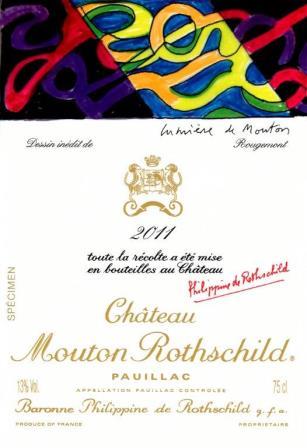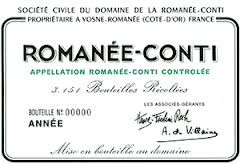It’s easy to read French wine labels, once you get the hang of it and learn a few simple phrases. Understanding a few terms, words phrases you need for reading French wine labels is much easier than it first looks.
This page will explain everything you need to know about how to read a Bordeaux wine label. How to read a Rhone wine label or how to read a Burgundy wine label. In fact, by the time you finish reading this easy to follow and read article, you will know everything you need to know about how to read French wine labels.
French wine labeling laws, or perhaps I should say, European wine labeling laws provide more information to the buyer than you usually find on American wine bottles. That’s why it’s important to get a handle on how to read French wine labels.
However, it’s equally imperative to gain an understanding on the reason and concept behind the information printed on French wine labels. The most important concept to grasp when learning how to read French wine labels is the concept of terroir.
The concept behind terroir is simple. The place of origin is what gives the wine its true character. Wines are different because of where they come from.
Each specific wine region provides a different wine tasting experience because of the terroir, or place of origin. In America and in several other new world wine regions, that is not always the case.
Labeling laws in America and in other new world wine regions are more interested in providing consumers with the names of the grapes used in the wine, instead of details about where it came from. For example, while in America, it might be important to inform consumers that a wine was made from Cabernet Sauvignon.
In Bordeaux, telling you that the wine was from Pauillac, and that being from Pauillac meant that the character of this wine comes from a blend dominated by Cabernet Sauvignon that tastes like it does because it is from Pauillac is the information the consumer needs to know.
In America and in other new world countries, the concept of place of origin is in a state of evolution. Today, the AVA, or American Viticultural Area continues gaining strength with consumers and producers.
In fact labeling laws vary to a degree in France, depending on the specific rules and regulations in each appellation and level of classification. For example, as you learn to read French wine labels, you will discover that the better the wine, or the higher the level of classification for the wine, more specific detail is provided.
On the other hand, as you learn more about how to read a French wine label, you will also discover that the lower the quality or classification of wine will provide you with less details printed on the wine label.
The lowest class of wine from France does not even provide you with the vintage, or origin of the vineyard, all you get is the producer name and the country of origin.
For some easy to read background information on the appellation system and a detailed look at the appellations of Bordeaux, Rhone, Burgundy, Champagne and other French wine regions: Vineyards, Grapes of France and Appellation Laws
If that was not enough reading for you, there are numerous rules and laws that vary from appellation to appellation and wine growing region in France, set forth by the AOC.
For everything you need or want to know about French wine law: Vineyards, Grapes of France and Appellation Laws If you are interested in reading details on the all the appellations in Bordeaux: Bordeaux Appellations Guide
Back to how to read French wine labels. Now that you understand the concept behind terroir, and in turn French wine labels, it gets a lot easier from here. These are the definitions for the majority of terms you are going to find when you read French wine labels.
Annee – Year the grapes were harvested in.
Appellation – AOC defined area where the grapes were grown in.
Blanc – White Wine.
Blanc Sec – White Wine
Brut – Dry Wine.
Cave – Wine Cellar.
Centenaire – Produced from grapes grown on vines more than 100 years of age.
Chateau – Estate where the wine was produced.
Cooperative – Group or syndicate of local growers that pool or mix their grapes.
Cote – Slopes or hillsides.
Cru – A wine, chateau or vineyard that has been classified.
Cru Classe – Vineyard that has been classified.
Date – The date on the label signifies year the grapes were harvested.
Demi Sec – Medium dry white wine.
Domaine – Similar to chateau, a place where the wine was made.
Grand Cru – A higher level of classification. The term Grand Cru takes on different meanings, depending on the region or AOC law.
Grand Cru Classe en 1855 – Specific to Bordeaux showing the chateau was classified in the 1855 Medoc Classification.
Grand Vin – The best wine from a producer.
Millesime – The vintage the grapes were harvested in.
Mis en Bouteille – The wine was bottled at the chateau or domaine.
Negociant – The wine was bottled by the negociant and was probably produced from purchased grapes or wine.
Premier Cru – A wine of First Growth status.
Premier Grand Cru Classe – A wine of First Growth status.
Pruduit de France – The wine is a product of France.
Proprietaire – Owner of the chateau or vineyard.
Recoltes – A wine made from estate grown grapes that is usualy of high quality.
Rouge – Red wine.
Selection de Grains Nobles – Sweet wine
Vendange – Harvest.
Vieilles Vignes – Old Vines
Vigneron – The owner, grape grower or vineyard manager.
Vignoble Vineyard
Vin – Wine.
Vin de Bourgogne – Wine from Burgundy
Year – The year on the label signifies year the grapes were grown and harvested.


